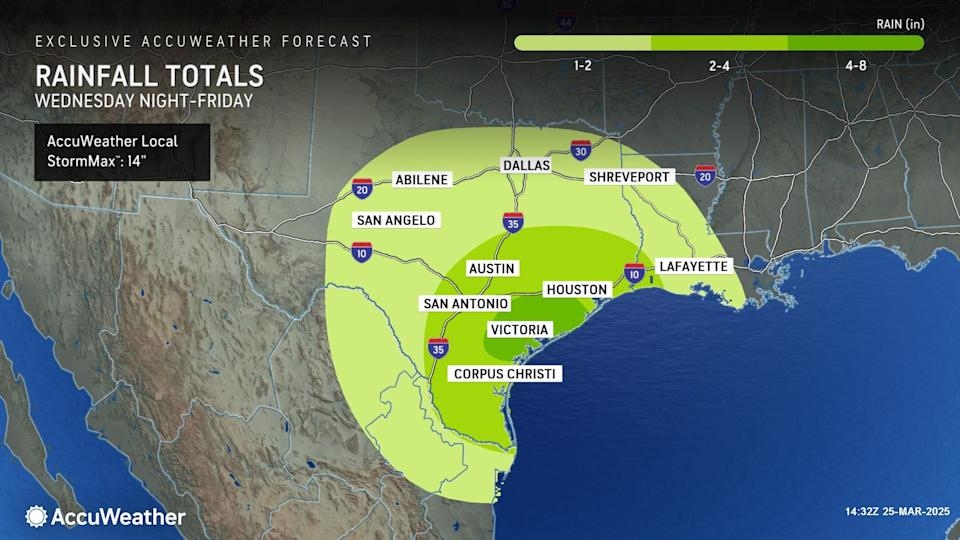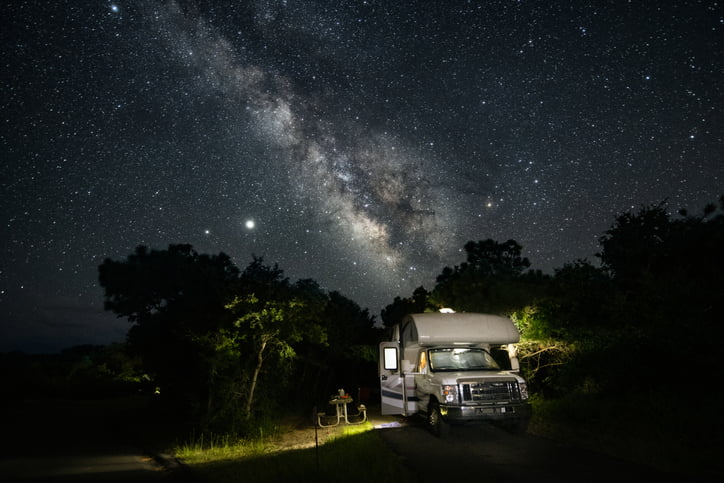Hey, Texas Gulf Coast—this isn’t just a typical storm. The National Weather Service has issued a Flash Flood Warning and they’re serious about it. We’re talking up to 10 inches of rain over the next few days, and this isn’t just heavy rain, it’s life-threatening flooding that could impact you and your community.
The rain is about to start, and it’s going to pour down fast. Flooding could happen quickly, and roads could be submerged, putting lives and property in real danger. You don’t want to wait until it’s too late to get ready—this is a situation where you’ll want to act fast.
What to Expect: A Whole Lot of Rain and Dangerous Conditions
Starting today, the Gulf Coast is in for some heavy rain, with conditions getting worse through Thursday. Experts are warning of up to 10 inches of rain in some places, and that’s a ton of water, especially when it all comes down in a short period of time. Localized flash flooding is expected, and it’s going to hit hard. Drainage systems will be overwhelmed, and streets that are usually safe will likely be flooded.
In addition to the rain, strong winds are going to make things even worse. They could knock down trees, cause power outages, and make traveling more dangerous than ever. And once the power goes out, you might be in the dark for a while—so it’s important to be ready for whatever happens.
What Does This Mean for You? Take Action Now
If you live in or around the Texas Gulf Coast, don’t wait around for this storm to surprise you—start preparing today. Here’s what you need to know:
-
Flash Flood Warning in Effect Until Thursday: This isn’t just heavy rain—it’s flash flooding that could develop quickly. If you wait until the floodwaters start rising, it may be too late.
-
Up to 10 Inches of Rain: This is a lot of water, and it’s going to cause flooding. Roads could get submerged, neighborhoods could be cut off, and some areas could even become impassable.
-
Floodwaters Could Rise Fast: If you live in a flood-prone area, move to higher ground now. Flash floods happen quickly, and it’s better to be safe than sorry.
-
Potential Power Outages: Strong winds could knock out power, leaving you without electricity for hours or even days. Make sure you have flashlights, batteries, and enough supplies to get by.
How to Stay Safe: Your Action Plan
-
Stay Inside If You Can: If the rain hasn’t hit yet, don’t leave the house unless you really need to. It’s safer to stay put than risk being out when things get dangerous.
-
Avoid Driving on Flooded Roads: If you’re already out and about, turn around if you see flooded streets. It’s easy to underestimate how dangerous flooding can be, but just six inches of water is enough to knock you down, and two feet of water can sweep your car off the road. Don’t take that chance.
-
Be Ready to Evacuate: If you live in an area that floods, make sure you know how to get out fast. Pack a bag, get your car ready, and have a plan in case you need to leave quickly. Don’t wait until the last minute when evacuation orders come through.
-
Check Your Gutters and Drains: Even a small blockage can make flooding worse. Take a few minutes to make sure your gutters and drains are clear of leaves or debris so water doesn’t back up and cause more problems.
-
Prepare for Power Outages: When storms like this roll through, power often goes out. Make sure you have backup supplies—flashlights, a battery-powered radio, water, and snacks can help you get through an outage. And don’t forget to charge your devices now in case the power goes out!



